by Riwo
After popular request what follows is part of my presentation at Gal’s Guide Galentine’s, on February 11, 2024. The theme was Dragons to tie into the Year of the Dragon. The speech was met with a standing ovation.





Have you seen a statue or a drawing of a dragon with a pearl? Sometimes the dragon is holding the pearl in their claw, holding it in their mouth, or under their chin. The root message comes from this mythological story.
Dragon’s Pearl Story
In a time when there was a greedy emperor, the people were starving. The land was desolate with barely a crop growing. A young peasant boy spent his days collecting as much grass as he could. His intention was to sell the grass to buy food for himself and his mother. His efforts each day would usually earn him one cup of rice for them both to share.
When the weather got hotter – and there was less grass to cut and sell – his mother grew sick of malnutrition. The boy wondered if there was a part of the nearby land that he had missed. To save his mother, he ventured farther. He reached a mountain. He climbed to the top, hoping for a better view of possible grasses to cut. But there was nothing as far as the eye could see.
On the way back down from the mountain, the boy noticed something moving. The boy spotted a rabbit; a healthy, plump rabbit. I mentioned they were starving, right? The boy sneaked after the rabbit. The rabbit ran between a narrow crevice of rocks. The boy followed. He squeezed through the rocks and came out the other side. The boy gasps. In this secret spot, there is a plentiful amount of lush grass. He thanked the rabbit and plowed all the grass. He headed home, sold the grass, and got a wonderful meal for his mother.
The next day, he returned to the same spot. To his astonishment the grass he plowed the day before was there again – untouched, like he hadn’t cut any the day before. Same thing, he cuts the grass, sells the grass, and has a wonderful meal with his mother. This repeats for several days.
The boy then thought about how far the journey to the patch of grass is and came up with an idea If I were to dig up the grass, I could plant it near our home. This way I will not have to travel so much every day.
As he dug carefully around the grass he saw something large, round, and brilliant – a pearl. Enchanted by its beauty, he put the pearl in his sack and carried it home. After planting the lush grass near their home, he showed his mother the pearl, suggesting selling it for a hefty price. She disagrees and says, “It is a blessing to have something so beautiful enter their lives”. Mother placed the pearl in a rice sack for safekeeping.
The next morning the boy woke up and darted outside to see how his new garden had grown. He is disappointed to find wilted grass. His plan didn’t work. But his mother calls him, in a rush, to come inside. The rice sack was overflowing with rice. Way more than the night before. Way too much for the two of them to eat, they shared with their neighbors. They realized that the pearl has the power to increase the quantity of anything it rests on.
Word spread about this magic orb. The emperor’s men arrived looking for the pearl and arrived on the doorstep of the boy and his mother. The emperor’s men ransacked the house looking for the pearl. When the pearl is found in the rice sack, the boy grabs it – and before thinking – he puts the pearl in his mouth and swallows it.
The boy experiences a thirst he never had before. He yells that he feels heat and burning sensations inside of him. He breaks free of the bad men and hurries to the nearest riverbank, consuming what little water is left.
Suddenly, black storm clouds appeared. Loud bursts of lightning echoed off the mountains. Rain poured, coating the land. The river gushed with a flood of water. The mother cried because her son was no longer at the water’s edge; there was now a giant dragon serpent. Her son has become a dragon. The dragon flew off and the mother thanked him for being the protector of their land.
My study of dragons
After reading the dragon pearl story many times, I thought, what if the boy didn’t hear his mother’s thanks? What if the dragon flew away in shame and went to hide? What if he hid in Ireland and a girl found him just as St. Patrick was getting rid of all the snakes? An East meets West story with a conflict in the middle.
So this meant I needed to learn about Eastern and Western dragons. I also needed to see what dragon mythos was out there to make it a little different. What I found was not only an interesting research quest but also some deep insight into the interconnectedness of being alive and sharing with others.
Eastern Dragons
Eastern Dragons look more like snakes or eels that glide through the air without wings. They usually have a mane that flows through the wind. When they exhale, a cloud forms. Sometimes dragons are given credit for when we hear thunder – a dragon’s whippy tale hitting against the storm clouds or another dragon causing thunder.
Dragons are believed to lay eggs. A baby dragon spends 3,000 years in its egg. It needs to spend 1,000 years in the water, 1,000 years in a mountain, and then 1,000 years around humans. An empty dragon egg is said to look like a beautiful stone with a small hole in it. This is why for Galentine’s Gal’s Guide bought for the giftbags, a heart stone necklace with a hole in it. I almost got pearls, but I didn’t want Emperor’s men to come and try to take it from the guests – or for them to even think about swallowing it.
The dragon’s snake-like appearance has deep meaning. When a snake sheds its skin, it is seen as being reborn, it’s a symbol of immortality, new life, and new growth. I also see shedding one’s skin as changing your mind. There is a lot of power in learning something new and changing your mind.
Snakes are not the only thing that is seen as being reborn, the moon also is reborn each month. The moon shed off its shadow and shows its luminosity of immortality. I will say that I’m grateful that I see the moon more often than a snake to be reminded of this rebirth.
Pearl
The pearl element in the story is taken from a kernel of real life and then wrapped in a myth. In nature, a pearl is formed when an irritant gets caught in an oyster. The oysters make a protective goo around the foreign object and over time that goo hardens and creates a pearl.

In myth, it’s the Naga-Queens who are always looking for pearls. Naga-Queens are like mermaids, but instead of a human on top and fish bottom; Naga-Queens are human on top, snake bottom. Nagas also live in water. Nagas are in a constant battle with their enemy, the garuda bird, who keeps trying to take their pearls.
These pearls are hoarded because they are seen as wish-fulfilling jewels. Just like in the dragon’s pearl story, these peals have a great benefit. For example, adding a pearl to a sack of rice can make more rice when you have little rice. But also that it puts a target on your back and causes greedy people to come. It’s like the stories of the people who win the lottery and then every relative comes out of the woodwork looking for money. So these pearls are a gift and a curse.
So what is the magic in these pearls? Eastern philosophers said that the speck that made a pearl was the “concrete essence of the moon.” Moondust to make a pearl. Or to go further into mythology, an emanation of the moon Goddess herself.
Moon
The moon is important in many folklore stories around the world. In Eastern mythology, the moon controls the tides that control the water. NASA has proven this to be true. The moon and the earth pull on each other. When the moon pulls on the Earth, the oceans bulge out and create high tides. High tides mean more water. If you are a farmer or live off the land, more water can mean more crops to grow.
Having a little moon in your hand, in the shape of a pearl, can bring great fortune. But it’s deeper than water, crops, and fortune….The moon is feminine. Feminine energy is wisdom. Knowing “the why” to plant certain crops and how to plant them is more important than just having seeds and rain. Wisdom is what brings the greatest fortune.
Yab Yum Wisdom
Often you’ll find in ancient images of Asian dragons you’ll see two dragons seemingly chasing a pearl.
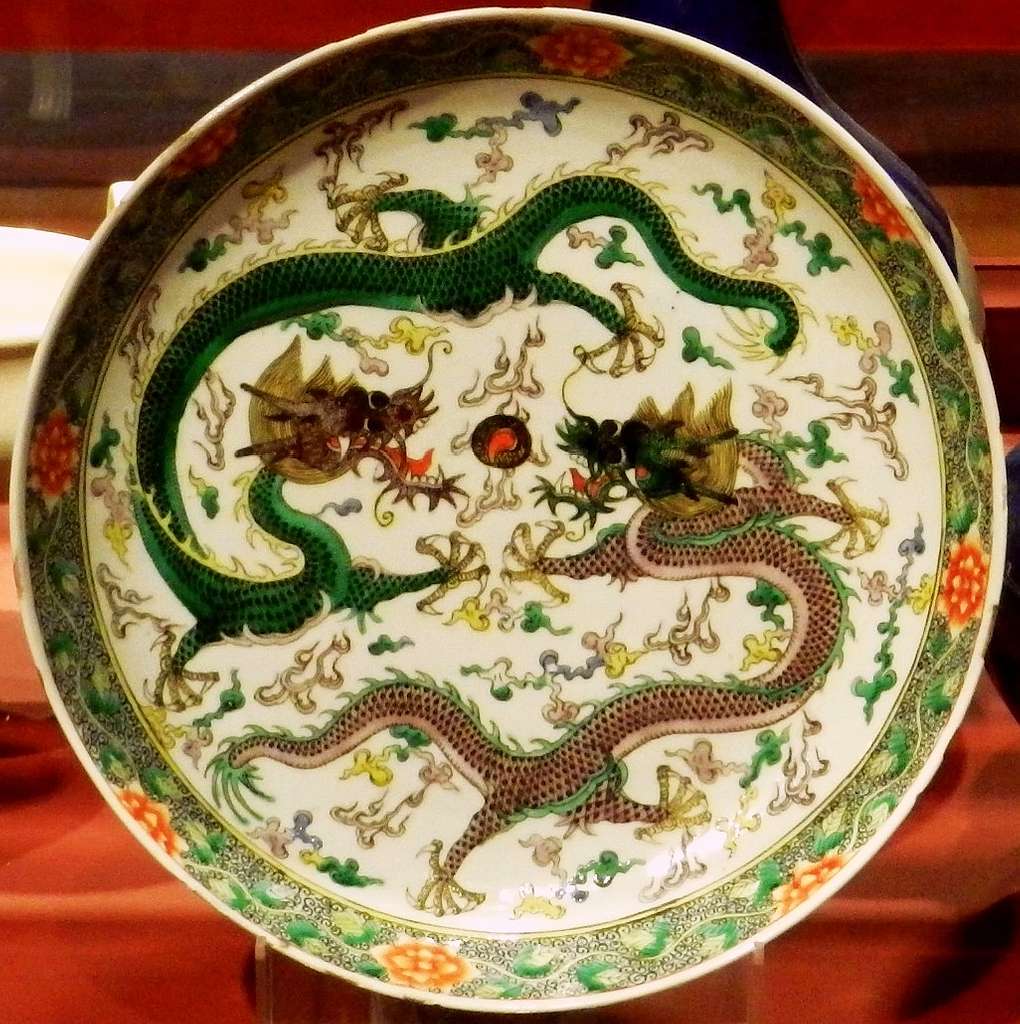
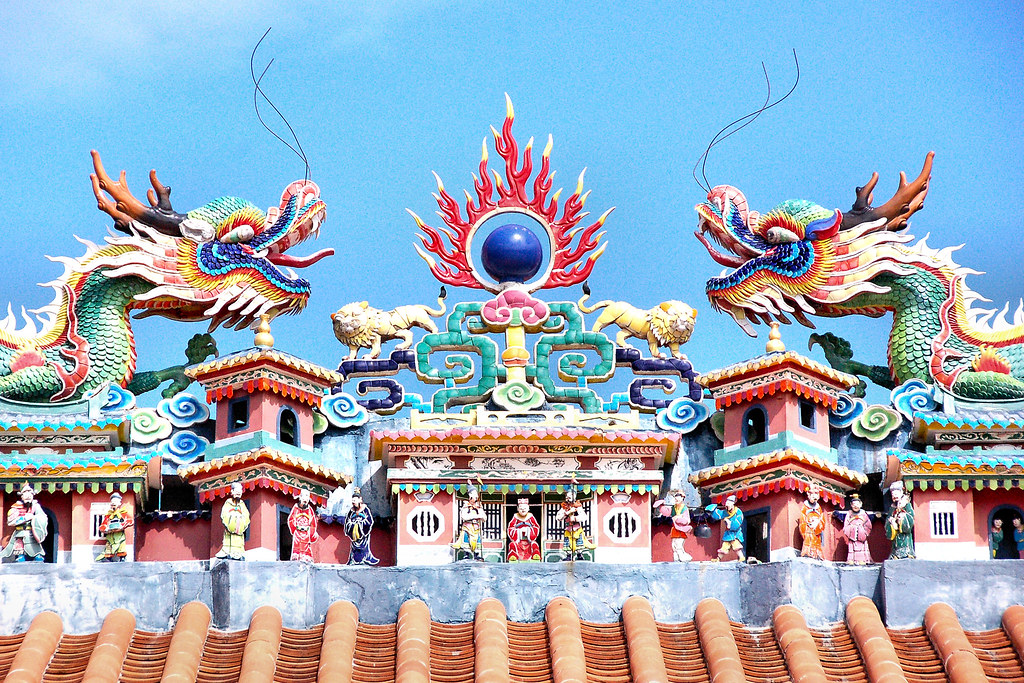
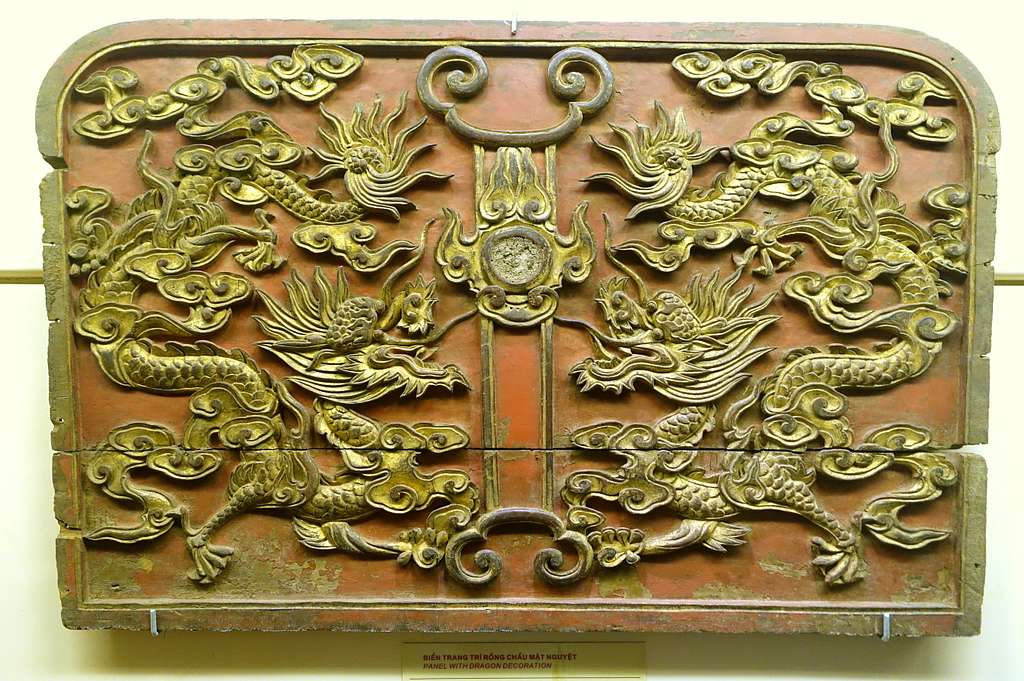
I’ve seen this as an example of Yin-Yang energy or Yab Yum. It is a representation of male energy and female energy in perfect harmony. You might have heard that Yang energy is masculine and more active, attractive, and light qualities – you know, dudes. And Yin being more feminine and passive and dark – sure. Le sigh.
But my root teacher, Lama Tsultrum Allione, teaches an ancient truth that in all of our bodies is an energy that is seen as masculine and an energy that is seen as feminine. The left side of our body is considered feminine and where wisdom comes from. The right side of our body is considered masculine and where skillful action comes from. When you allow a union of the two and let them work in concert with each other, you have the wisdom to do the hard things.
Seeing two dragons is a meeting of wisdom and action. In the center is what looks like a pearl. And around the pearl appear to be flames, little jagged flashes.
Fire
In Buddhism, there is a connection between wisdom and flames. So much so that we draw our deities with wisdom flames emitting from them. We also have this saying when we start a controlled fire for a holy day we say, “May all beings cause the fire of wisdom to blaze.”
The analogy of wisdom with fire. When fire burns something, the object is not completely gone – there is a residue. But the fire of wisdom burns off everything completely, no ash, no residue, nothing remaining. Emptiness of form. Form of emptiness.
This wisdom is a slow burn. It’s gradual, it’s in stages. It’s not that you light a wisdom match – and poof all your problems are solved and you understand the nature of reality. It’s a path of removing veils and removing old ways of seeing. Stage by stage, you burn away that that does not serve you – burning away the obstacles in your life. Only by learning what those obstacles were, how they blocked you, and how you can cut yourself free of them and allow them to truly burn up.
Wisdom is how you get rid of a poison in your life in a way to have it never return. Sometimes you have to get to the root and eradicate it from there. That’s why in some of the drawings of the pearl, you see something coming out of the pearl like a sprout of new growth (or a root) that needs to be removed. The root cause of suffering.
What is the root cause of suffering? Thinking we are separate from each other.
It sounds really simple – we suffer because we have divided ourselves into “Us” and “Them”. But it’s not an easy fix because we have so many distractions that keep us separate from one another or voluntarily put ourselves in boxes. What we think might be unifying us is actually putting up a barrier to an Other.
When we realize how interconnected we are, we can see how one person sends ripples out to many. If that wisdom is captured by the written word, a drawing, or shown, or told – then that person lives forever and wisdom is a light in the dark.
The mantra of “fire of wisdom to blaze” is a calling to all beings to reach that level of wisdom that completely destroys what blocks us from being happy. So there is that fire element in Eastern dragons but it’s different than the Western fire energy.
Hoarding
Hoarding comes up more with Western dragons, but remember the nagas – the snake mermaids and their enemy the Garuda bird who steals their pearls? Here is another layer if you think of the pearls as wisdom. The Nagas are worried about wisdom being stolen. So Nagas like to hide their wisdom until the right person appears. When they give their wisdom to a human it’s called, in Tibetan, a Terma.
Tibetans also have a dragon called the Thunder Dragon, Druk. This dragon is seen to be able to discern lies from fiction. This dragon carries a thunderbolt and can be activated metaphorically to get your attention if you are heading in the wrong direction. This thunderbolt is to wake you up and get you back on track. The Thunder Dragon Druk spends a lot of time with monks.

The overall Eastern Dragon is one of helpfulness and compassion. They search for and hold a magic pearl, that has so much wisdom, that it has flames around it.
The message in this combined mythology is that each universe has a gift-fulfilling jewel floating in space. Ours is the moon. When flakes of the moon come to Earth we find them in pearls. If we are lost the Thunder Dragon can wake us up and connect us back to wisdom.
Western Dragons
The East and West traded more than goods. Western dragons started showing up in myths after those documented in China and Japan. The folklore stories about dragons appear in the West before Homer.
When sea-fearing merchants met other migrants, they told tales of scenes and adventures in far countries. They told of strange gods and demons – half-human serpents often gigantic and terrible. With the dramatic sense strong in all storytellers, they exaggerated their tales to be so unbelievable that they would be long-remembered. These stories were then re-told. You know the old adage, they told two friends, then they told two friends, and after a while the story is unrecognizable.
Many roads led to Greece, so whenever a tale from the East was turned into something else in art and epic poetry – it got weird. Like The Iliad, I mean, the Chimera, what mess of sailor stories was this mash-up! So, legit – Homer describes the Chimera in The Iliad saying, “She was of divine stock not of men, in the fore part a lion, in the hinder a serpent, and in the midst a goat, breathing forth in terrible wise the might of blazing fire.” I mean it’s like these took Eastern words and animals they most likely haven’t seen and put all of it in a bag with Greek scrabble tiles, shook it, and just – yeah, a head of a lion, a butt of a snake, a goat coming out the middle. Why not?!
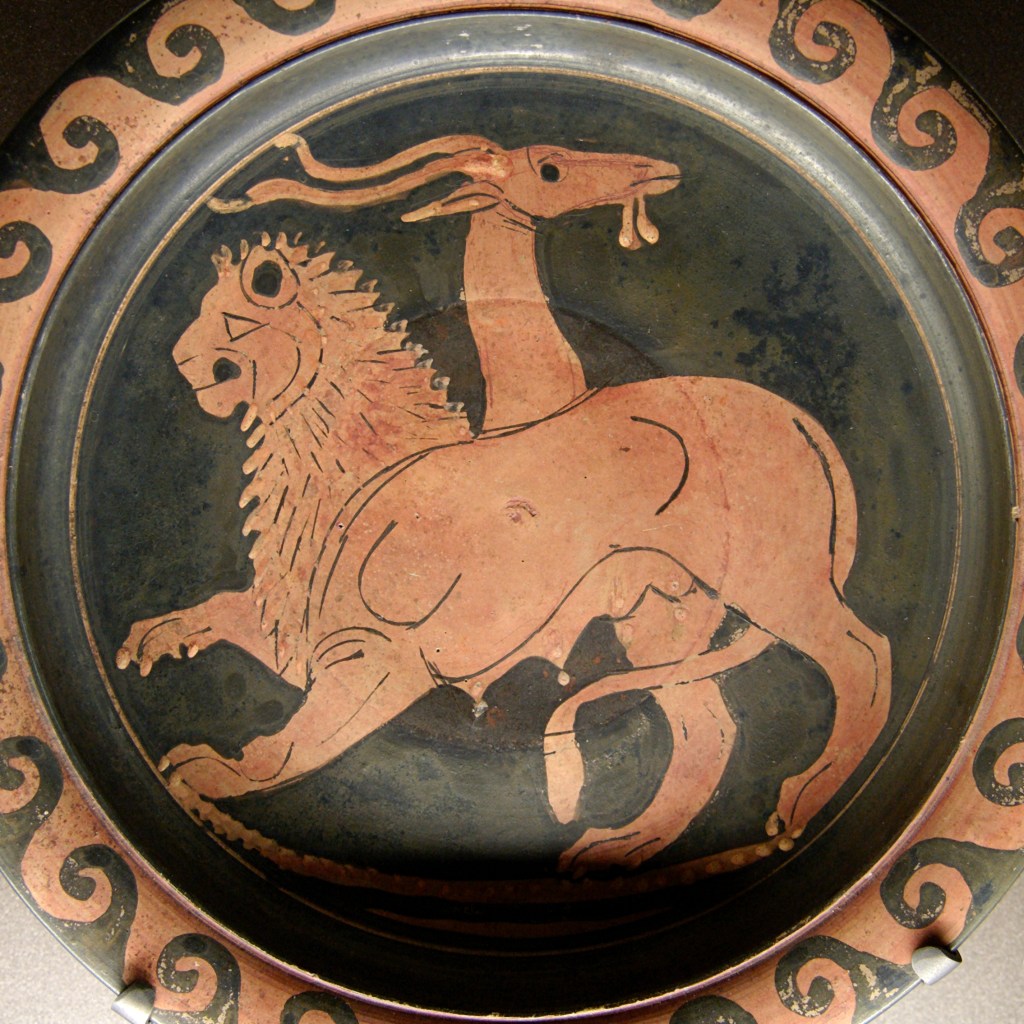
But in Greek myths of Mount Olympus, before Zeus took over, there were the Titans. There were 12 of them at the start. At one point, their leader was Ophion, the Great Snake, sometimes called a dragon.
In Greek myths, dragons were something to be killed. In Greek myth, dragons guard treasure, Hercules killed quite a few of them in his travels. Jason and his Argonauts needed to defeat a dragon to get the golden fleece.
In the Middle Ages, the European dragon is typically depicted as a large, fire-breathing, scaly, horned, lizard-like creature with bat-like wings and a dinosaur-like tail.


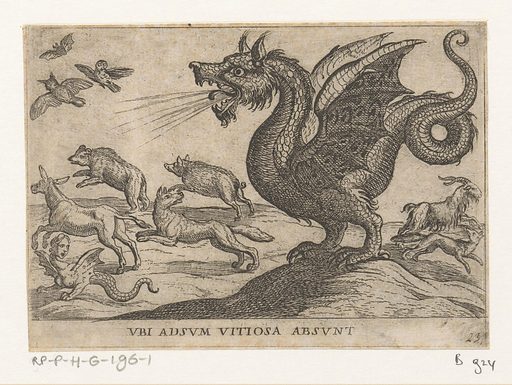
Some common themes that can be associated with Western dragons had some deep meanings that came out of the Middle Ages. There was
Dual-Nature of Power: Often portrayed as powerful and majestic creatures. A dragon’s ability to breathe fire or possess other daunting powers symbolized the dual nature of power – it can be both destructive and constructive. This duality encourages a person to think about the responsible use of power and the consequences of unchecked strength.
Quests and Challenges: Many Western dragon myths involve a hero embarking on a quest to slay the dragon and rescue a damsel in distress or obtain a treasure. The dragon here symbolizes facing challenges and overcoming obstacles to achieve goals. The dragon is a hurdle and an adversary that one must confront on the path to personal growth and success.
Symbolism of Chaos and Order: Dragons are sometimes associated with chaos and disorder, challenging the established order. In this sense, they can be seen as symbols of the unpredictable and chaotic aspects of life. Dragons can cause you to think about the balance between chaos and order, acknowledging that both are essential for growth and development.
Guardians of Wisdom: In some myths, dragons are depicted as guardians of ancient wisdom or treasures. This represents the value of seeking knowledge and the idea that wisdom is often protected and must be earned through trials and challenges.
Moral Ambiguity: Not all Western dragons are portrayed as purely evil creatures. Some myths depict dragons with more nuanced characters, blurring the lines between good and evil. This ambiguity encourages reflection on the complexity of morality and the idea that things are not always black and white, fire and ice. The Dragonheart movie with Sean Connery is my go-to example here.
Women with Dragons
Then there are women with dragons. There is a great thought piece about Game of Thrones called Women with Dragons: Sacred and Dangerous. The piece gets specific about the episode “The Women and the Dragon” but she writes this sentence that I feel encapsulates so much of Western dragons and women. She says, “The motif has positive aspects of holiness, rejuvenation, protection, healing, and associations to great goddesses and, at the same time, has negative aspects such as being witches, murderous, temptresses, and emotionally uncontrolled women.”
When you see women and dragons there can be a sense of empowerment or “look there’s a woman and a dragon and they can exist in the same space and not try to kill each other.” But there is still this ick feeling that the dragon is the guardian and the woman is an object. Only the guy can come and slay the dragon and free the woman only to win her as a prize. Eww.
Women are sometimes portrayed as powerful and fearless dragon slayers. In Christian texts, Saint Margaret is a virgin martyr who was swallowed by a dragon but the cross she carried irritated the dragon’s stomach causing it to bring her back up, still alive. In Norse history, there is Sigrid the Haughty the Queen of Sweden. She is said to have killed a dragon on her travels. These are depictions that challenge traditional gender roles and stereotypes, showcasing women as warriors and heroes capable of facing formidable challenges.
So I ask you, what if women were not afraid of the power of a dragon but learned to communicate with it?
A Woman’s Inner Dragon
The pairing of women with dragons can symbolize feminine strength and resilience. The dragon may represent untamed power or seemingly uncontrolled order; a woman could embody the ability to harness and channel that power in a positive way. Like protecting her children…or writing her life story.
Women will commonly be written as motherly and nurturing figures. The Mother of Dragons from Game of Thrones and the new spin-off also showcase dragons as symbols of her leadership and ambitions.
Women with dragons are often emphasizing a connection to magic. Sometimes that magic is just more of a connection to ancient wisdom. What does communicating with your inner wisdom feel like to you?

One more example that doesn’t come up in my dragon research from any cultures but it’s something I connect with strongly. The protection of the cave. The fierce protection of a different kind of treasure, not gold, silver, or even wisdom treasure. I’m talking about the protection of our babies. – And I’m going to hold the space open for our ladies whose kid plan is a strong- PASS. Rock on sister friend, that is valuable too – but I’m talking about this fire in my belly that if someone comes for my baby, you better back up because my love is fierce and I will not hesitate to create chaos and destruction if you come with ill intentions towards the people I love. This is the dragon power that protects my cave… It’s not hoarding, or startin’ trouble, but me trying to carve out my own little hole in a world I know sometimes hates me.
As a woman in this world who uses her voice (most times) without a quiver, I know the world sometimes hates me. Hates the feminine confidence they think I have. Hates the power they think I have. Hates what revolution I could cause.
But I just want a little cave, a place of quiet, a place of rest, a place to read my books and drink my mimosas. My innermost cave – illuminated by a pearl that shines as bright as a full moon on an Autumn night. The wisdom that even though I sit in my cave with my babies and my love, I’m still interconnected to the world around me. I can still feel and know that we are not separate. I can still be inspired and empower by the people who have come before me and the beautiful souls who are making the world a better place right now.
We all need our innermost cave. We all need to feel grounded like a snake to the earth and fly high above to get a better view. We can all be like dragons – wise, strong, powerful, and magical.
Thank you.

Riwo is the Executive Director of Gal’s Guide. She has been a Buddhist practitioner for over 30 years. Riwo is a student of the Magyu: The Mother Lineage led by Lama Tsultrim Allione. Riwo is married with two wonderful children. She loves Star Wars, women’s history, and laughter.
Follow Riwo on Facebook
Read other Riwo posts on Gals Guide
